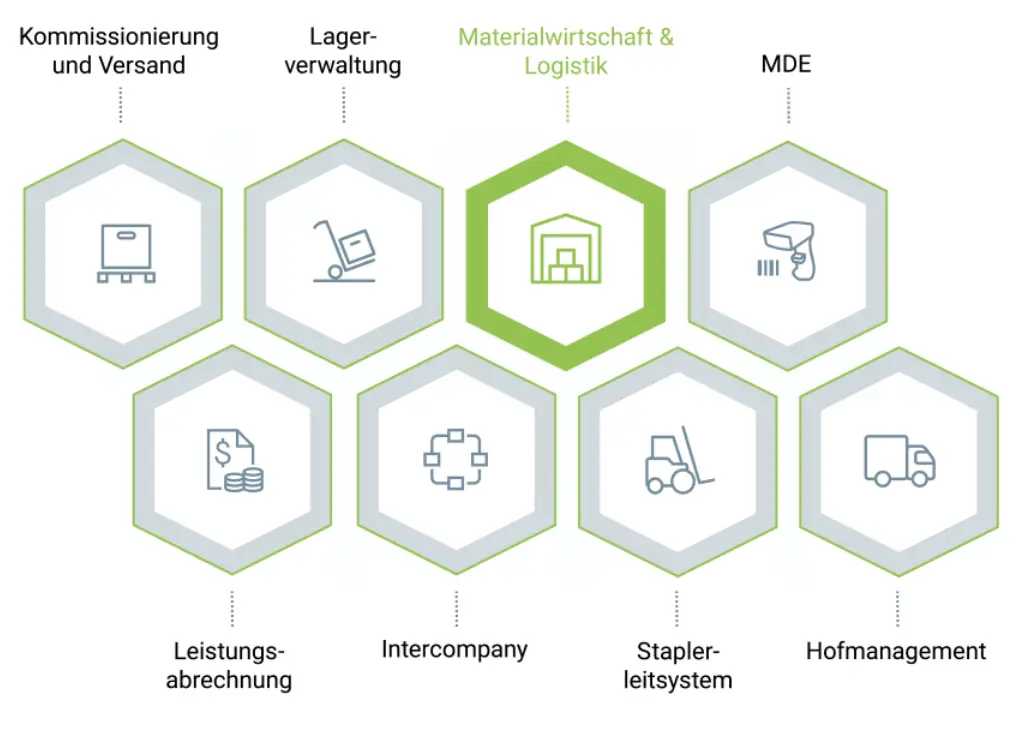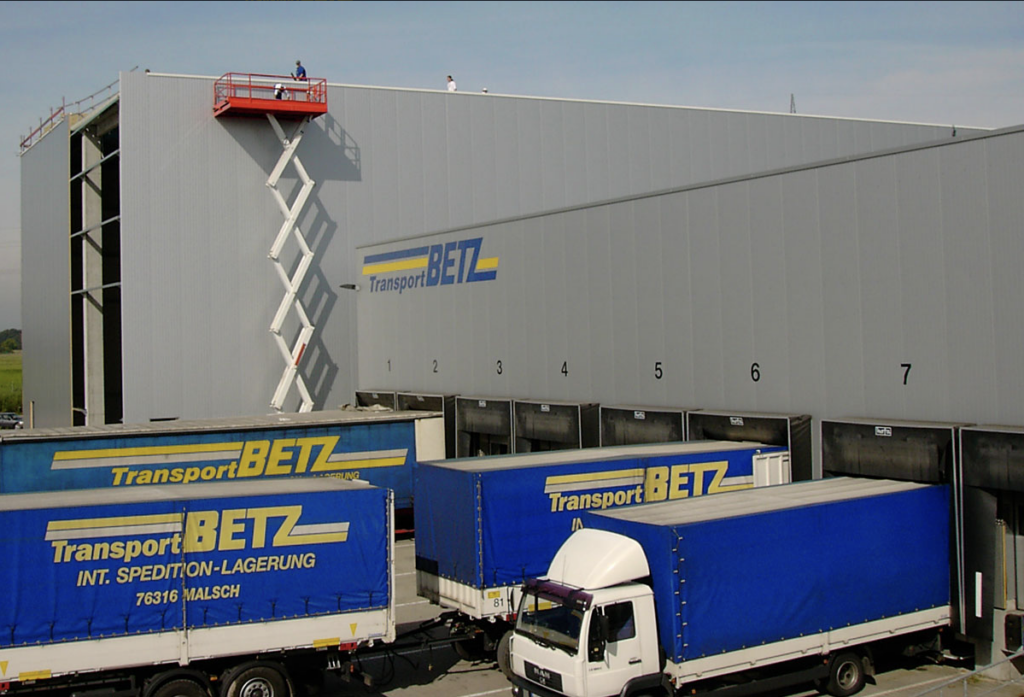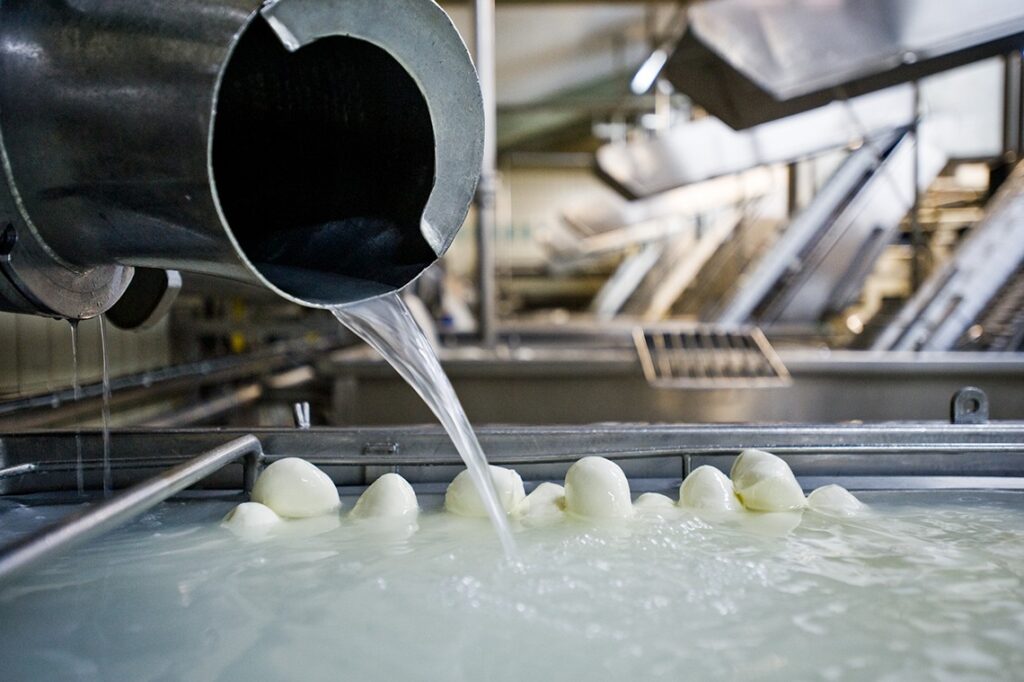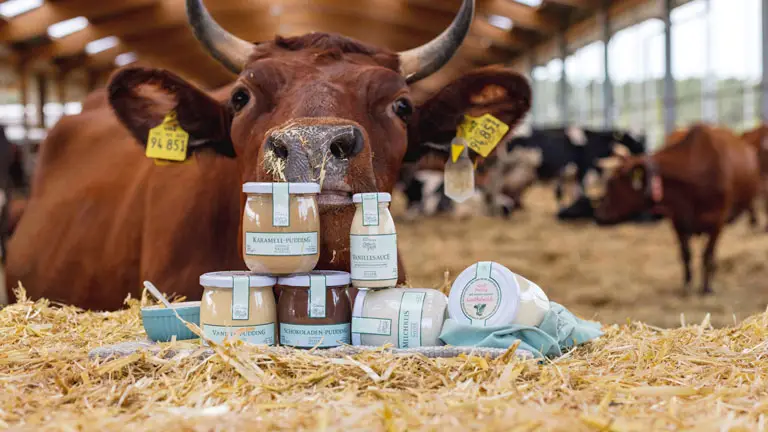GUS-OS Suite
ERP system with vision
Materials Management & Logistics
The GUS-OS Materials Management module, together with Inventory Management, forms the foundation of the GUS-OS Suite, especially for material requirements planning as well as for the operational functions of purchasing, production and sales. Thus, you achieve an optimal orchestration and holistic mapping of all relevant workflows and processes. The batch-related inventory management also allows the management of stocks in several dimensions (e.g. QC status and warehouse/location). For each batch, the system calculates and monitors the QC release date, remaining shelf life, expiration dates or BBDs. In addition, the system generally differentiates between physical (on hand), logically combined and available or reserved stock.

Forklift guidance system
The GUS-OS forklift control system module controls the transports for storage and retrieval of pallets to a pallet warehouse (storage bin warehouse). The necessary transports (e.g. for replenishment in production) are recorded in a corresponding transport order table and sorted there according to dates and urgency. The orders are processed with MDE support.
Yard Management
By using the GUS-OS Yard Management module (Dock & Yard Management), activities at the loading docks can be controlled as well as the traffic taking place on the yard premises can be coordinated. In addition, the function enables the smooth management of the yard parking spaces of the warehouse (yard management).
Picking and shipping
Various options are available for mapping the picking of customer orders. For example, the orders for two-stage picking can be combined into one picking process. Conversely, it is also possible to divide the customer orders into different picking processes (e.g. deep-freeze area and dry areas). In this case, the actual picking is handled by suitable orders with PDC support. In addition, a differentiation is made between classic picking areas with corresponding package formation and full pallet transports. For shipping, customer orders can be grouped into delivery tours. When orders are assigned to these tours, the maximum occupancy of the vehicles can be monitored. The loading can be controlled via these tours and the delivery bills can be printed out in the order of the arrival points.
Warehouse management
The GUS-OS Suite differentiates between open storage locations and bin or block storage facilities in warehouse management. With the GUS-OS Suite, warehouses can be assigned to different locations of the company. At the warehouse level or also for the individual storage locations, certain restrictions can be defined with the help of the storage type check, which are also taken into account during the storage of the material stocks. Likewise, it can be configured that only batches in a certain quality status can be stored in selected warehouses. With the help of the warehouse lists, a sequence can be defined in the warehouse search, which takes effect in the automatic reservation of stocks in production. Tank farms / silos can also be mapped with appropriate mergers of incoming batches. For the handling of passive contract manufacturing, corresponding warehouses can be set up for the individual contract manufacturers.
Service accounting
The GUS-OS service accounting module is a tool for determining and calculating logistics services, which is primarily aimed at logistics service providers. It enables the flexible definition of all potentially eligible services as service types as well as their configuration for billing.
MDE
To optimize transport orders in the warehouse and picking, the GUS OS-Suite enables the connection of hand-held terminals via radio data transmission. The system provides special browser interfaces for this purpose. The MDE devices connected to the ERP solution support not only the processing in picking but also the package formation and the loading confirmation.
Intercompany
Intercompany is about the simultaneous processing of several legally separate and / or fiscally related (subsidiary) companies. Information flows, goods movements and value flows between the companies are controlled via workflow with the help of automatic intercompany clearing (business link). The GUS OS-Suite also provides you with this option if required.
Mastering challenges in the process industry
Short development cycles, multi-stage manufacturing processes, restrictive legal requirements, strict certification requirements, and high demands on quality and environmental management: This poses major challenges for companies in the process industry and their IT systems
- especially since legal and industry-specific requirements and regulations differ from country to country and change frequently. With the GUS-OS Suite, we provide a modular solution with which companies can control complex processes across the entire value network in a consistent, integrated and yet flexible manner thanks to fully integrated workflow management. Find out how this works in our module information.
Download now!
Feature Pack 7.0 of the GUS-OS Suite
With Feature Pack 7.0, the latest version of the GUS-OS Suite is now available. Besides additional modules, it offers a multitude of new functions. Highlights of the Feature Pack are the comprehensively modernized user interface and the optimized update procedure. The GUS-OS Digital Hub Service has also been further expanded. The cloud-based service now offers extended display options as well as new, ready-made solution modules to improve communication with the field service.
Entry into digitization
The GUS-OS Digital Hub Service is a cloud-based service that allows you to individually make the processes of your GUS-OS Suite accessible outside your company. Business partners and external employees can interact directly with your ERP system, retrieve, set and update data via the web app. Get to know our Digital Hub now!



